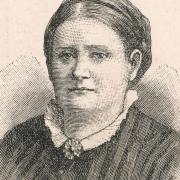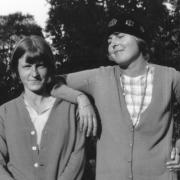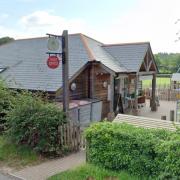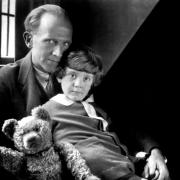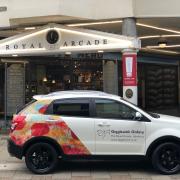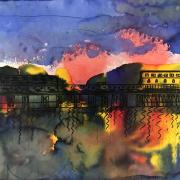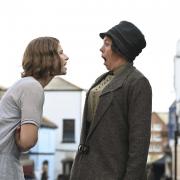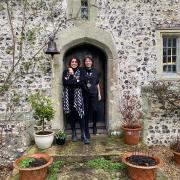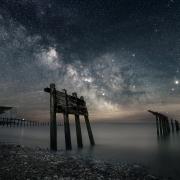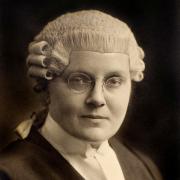In 1877, Ulysses S Grant became the first former American President to visit Britain, spending three days in Brighton where he enyoed a rapturous reception

“If I were an Englishman, I think I should select Brighton as place where I should live, and I am very sure you could not meet a jollier and better people anywhere.” The orator paused to welcome the rapturous applause of the audience gathered in his honour at the Royal Pavilion.
His words thrilled a townspeople already revelling in the reflected glory of hosting this most illustrious visitor.
For Ulysses S. Grant was one of the most revered men in the world. As Commander General of the Union Army, he had won victory over the southern Confederacy in the American Civil War before then serving two terms as President of the once-more United States.
Grant spent three days in Brighton during October 1877. His was the first visit by a former American President to Britain. Having recently retired from political office, Grant travelled across the Atlantic as part of a world tour that he undertook along with his wife Julia and youngest son Jesse.
The family arrived in Liverpool aboard the SS Indiana on 28 May. From there, they toured widely across Scotland and England, including a ceremony at which Grant received freedom of the City of London as well as a reception hosted by Queen Victoria at Windsor Palace. (Her Majesty was not amused by Jesse’s petulant complaint about seating arrangements for dinner.)
Grant travelled by train from Victoria Station to Brighton on the morning of Saturday 20 October. He came to the city as a personal guest of Conservative MP John Ashbury who, along with a small reception committee, welcomed him as he set foot onto the platform. A carriage immediately took the Grants on a tour of Brighton’s newest cultural attraction, the town aquarium.
The man behind this marvel of Victorian architecture and engineering was Eugenius Birch, who graced the Sussex coast with his designs for the Eastbourne, Hastings and Brighton West Piers.

Opened to the public in 1872, construction of the Italianate building had cost £133,000, equivalent today of £5.5m. Boasting what was at the time the largest display tank in the world, able to hold 110,000 gallons of water, it put Brighton on the map as an international tourist destination.
According to the local press, Grant and his family “exhibited a considerable interest” in the specimens on display. This included two other travellers from the United States – a pair of sea lions shipped from San Francisco only a few months earlier.
The reader hoping to retrace Grant’s steps at what is today Sea Life Brighton will need some imagination. Long gone are the clock tower and skating rink admired by the former president.
So too the conservatory where a band entertained him with “a selection of American airs”. Nor will one see, as did Grant, any alligators on display.
Following their excursion, Ashbury escorted the Grants back to his home at 7 Eastern Terrace where that evening they dined with more than 300 guests accompanied by another musical performance. As someone “notorious for his aversion to display”, according to one newspaper, the recently retired president no doubt welcomed a private dinner with his host the following day.
A day of leisure also provided Grant time to prepare for a formal reception in his honour. The erstwhile president might not have welcomed extravagance, but an extravagant welcome awaited him on Monday 22 October.
Each community that hosted Grant attempted to outdo the others. Southampton, for instance, welcomed him with a choral performance of a specially commissioned song. Brighton was therefore compelled to put on a show. The venue chosen was the Royal Pavilion.

MORE: All you need to know about Thomas Paine and his links to Sussex
Receptions for foreign leaders at the Pavilion were not without controversy. Elements of the British press denounced the welcomes extended by the civic leadership of Brighton and other cities to the likes of Louis Napoleon of France and the Shah of Persia, who visited the Pavilion respectively in 1872 and 1889.
The hosting of Grant was, by contrast, cause for universal celebration. Even the radical Reynolds’s Newspaper conceded, “We have been so accustomed for many years to have such a set of royal rapscallions landed upon our shores, and received with a sickening amount of toadyism, that it is quite refreshing to have the ex-ruler of perhaps the greatest country of the world amongst us.”
Scandal did in fact overshadow Grant in his home country. His administration had become mired in political misdeed, including accusations of bribery, fraud and corrupt use of patronage.
Although not held personally accountable, the president endured harsh criticism for his misplaced faith in crooked officials. In the words of The Times, “a ruler necessarily concentrates on himself the blame incurred by his subordinates”.
For all his failings, Grant was nonetheless the military commander who helped save the American republic and secure the abolition of slavery. As president, he had also restored harmonious relations between Britain and the United States after the resolution of a diplomatic dispute over attacks on Union vessels by Confederate raiders built in British shipyards.
Beaming with civic pride, the Brighton Guardian deemed the celebration in honour of Grant a “really brilliant success.” The Grants arrived at the Pavilion to the strains of the presidential anthem ‘Hail Columbia’ and guards of honour formed by the Royal Sussex Regiment and 1st Sussex Artillery Volunteers.

A sumptuous banquet awaited the former president and his family, prepared by a team of pastry chefs and confectioners from Edwin Booth’s business on nearby East Street. The seven courses included such delicacies as stewed eels, oyster rissoles and larks’ meat sausages.
Introduced to the audience by Mayor-elect John Mayall amidst “vociferous cheering”, Grant conceded that he barely knew how to follow the fulsome praise from his host.
This was not undue modesty. For all the fanfare that accompanied his visit to Britain, one newspaper had proclaimed him “about the worst hand at speech-making to be found in the whole English-speaking race”.
The address nonetheless thrilled his audience. Grant flattered them on the “peculiar and great advantages” of their town, specifically the fact that it was so close to London but without the commotion of the capital.
“Within an hour you can go up to London, to transact your business, and return in the evening,” he pronounced in a speech that still resonates for the commuters of today, even though it reveals that the trains do not run any faster than they did in the 19th century.
In words that anticipated the later notion of a ‘special relationship’ between Britain and the United States, Grant also proclaimed how the peoples of the two countries “were going to be the greatest in the world”. The following morning, he and his family headed from Brighton to Paris on the next stage of their tour.
It would be another four decades before Woodrow Wilson became the first sitting US president to visit Britain and not until 1963 that one set foot in Sussex, when John F. Kennedy visited Prime Minister Harold Macmillan at his Birch Grove estate.
Recreating Ulysses Grant’s tour of Brighton is relatively straightforward. The more adventurous are encouraged to include a detour to the Brighton and Hove Cemetery where an unadorned grave reveals another transatlantic connection.
At the Royal Pavilion, Grant met Captain Alexander Sinclair from Shoreham, whose brother had served under the general’s command in the Union Army. The grave in Brighton is of Henry Holden, another Sussex man who fought not only in the American Civil War but also with General George Armstrong Custer at the disastrous Battle of the Little Bighorn.
His modest memorial is no less a reminder than the visit by President Grant of how local stories connect us to the larger events of world history.





